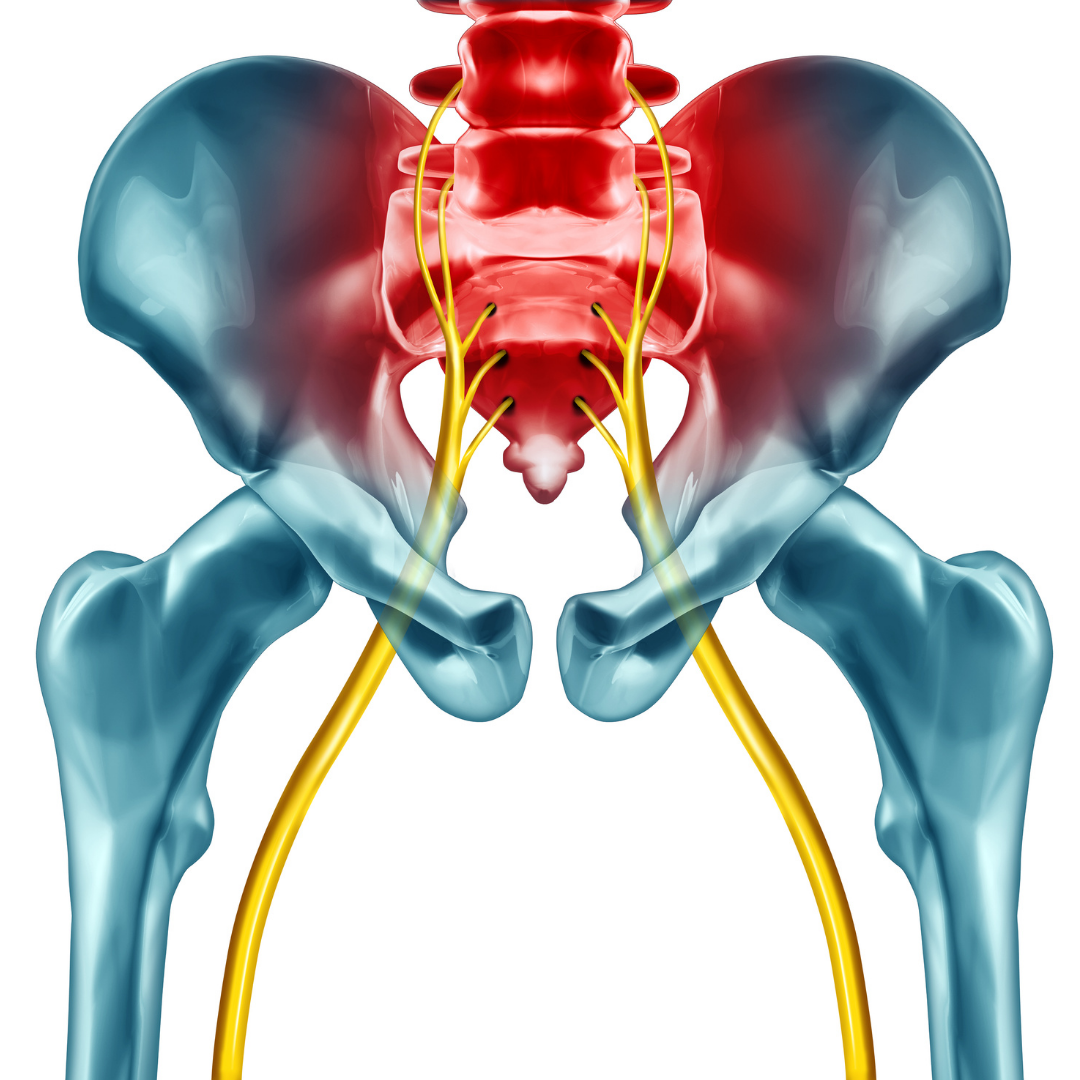
What is Sciatica?
Sciatica is a disorder of the sciatic nerve, which is one of the longest and largest nerves in the human body. The sciatic nerve emerges from both sides of the spine in the lower back, and each side splits into five branches as it travels through the buttocks and legs to the feet. It's responsible for much of the sensation in your legs.
Caused by pressure on the sciatic nerve roots, sciatica typically presents as pain or weakness in one leg or the other. These symptoms can manifest as a tingling sensation, a sharp radiating or shooting pain in the legs, or numbness in your thighs, calves or feet. Pain often occurs below the knee, despite the distance from the cause of the pain. Coughing and sneezing, other sudden movements, or even prolonged sitting can trigger or worsen sciatica.
Who’s at Risk for Sciatica?
At Plato Chiropractic Health Clinic, our doctors treat sciatica in patients of all ages and walks of life, although it most frequently occurs in patients between the ages of 30-50. Common risk factors for sciatica include:
- Spinal changes as a result of aging
- Strain on the spine from obesity
- Cigarette smoking, which is linked to disk degeneration and back pain
- Mental stress
- Sedentary lifestyle
- Diabetes, which is linked to a higher risk of nerve damage
At Plato Chiropractic Health Clinic, we have helped hundreds of patients who suffer from sciatica relieve their pain through noninvasive chiropractic treatment that improves function, and removes pressure and inflammation to the sciatic nerve. We also advise our patients on pain management techniques, such as stretches and exercises that target the sciatic nerve.
Common Causes of Sciatica
While the word sciatica describes a set of symptoms, the condition's root cause can vary widely among patients. Sciatica most commonly occurs as a result of overuse or abuse of the lower back muscles and lower spine, or even simple wear and tear. In nine out of 10 cases, sciatica is caused by a slipped or ruptured disk. It does not often develop as a result of injury.
Other causes of sciatica include damage to the joints of the spine or the muscles of the hips, spinal bone spurs, narrowing of the spinal canal (spinal stenosis), and, less often, tumors.
All of these can compress the sciatic nerve roots, causing pain and inflammation. Sciatica can be triggered suddenly, and it typically begins with mild to moderate symptoms that worsen the longer it is left untreated.
Chiropractic Treatments for Sciatica
Our chiropractors recommend gentle realignment to treat sciatica. Manipulation of the lumbar spine can assist with range-of-motion issues that may be contributing to sciatica pain, along with addressing muscular issues surrounding the lumbar spine and pelvis. Realignment and reduced stress on the nervous system help your body begin the healing process on its own.
A study published in the Journal of Manipulative and Physiological Therapeutics in 2001 found that patients who pursued chiropractic care for lower back pain and leg pain had a better long-term outcome for pain management and mitigation. Most patients with sciatica see reduced pain and inflammation within six to eight weeks of beginning chiropractic treatment.
At Plato Chiropractic Health Clinic, we typically recommend taking a complete history to determine if you suffer from sciatica and the likely root cause of your condition. This would include questions about your pain frequency and intensity, as well as how long you’ve been experiencing symptoms. A physical and neurological exam, including testing of reflexes and muscle strength, can help your chiropractor gain a better understanding of your symptoms.
Sciatica sometimes shares symptoms with more serious conditions. Depending on the severity of your sciatica pain, as well as other symptoms you’re experiencing, you may be referred to a local clinic or hospital for imaging tests to rule out more serious conditions.
Managing Pain From Sciatica
If you are living with sciatica, there are a few simple steps you can take to decrease the risk of worsening your condition. These include:
- Sitting with legs uncrossed
- Carrying purses or bags with both hands
- Maintaining proper posture and utilizing proper lifting techniques
- Avoiding sitting or lying down for long periods of time
- Healthy diet and regular exercise

